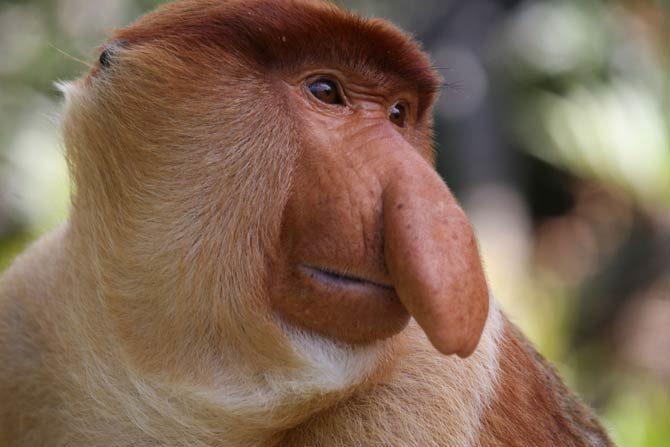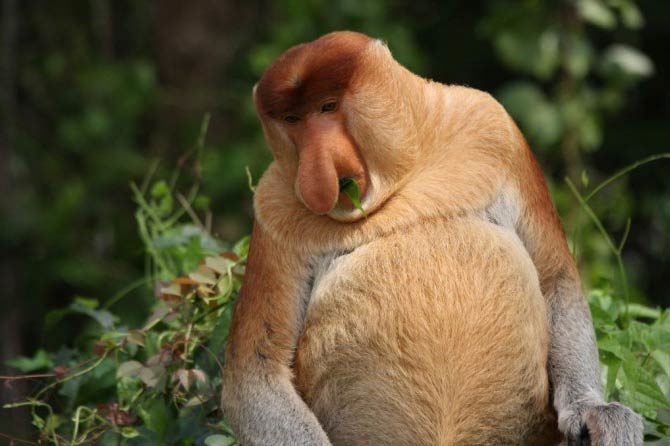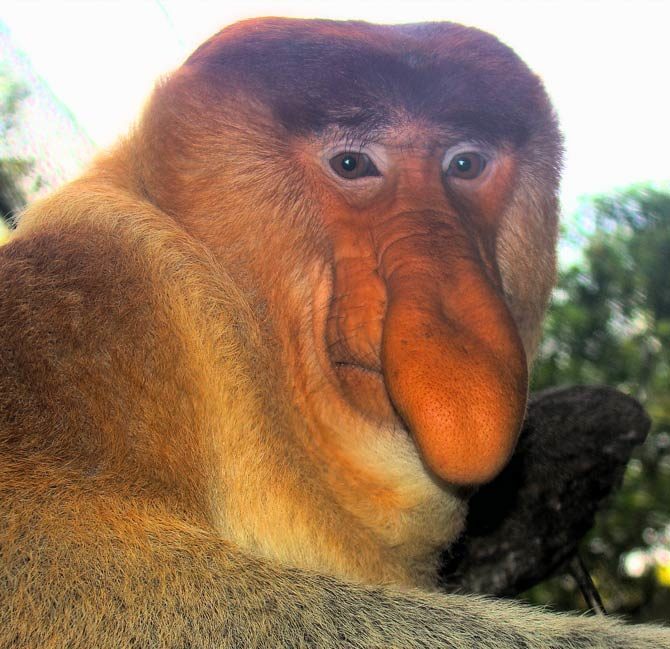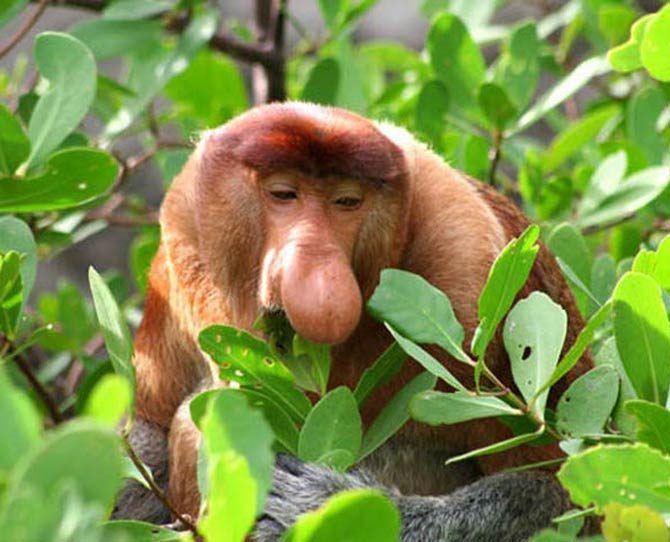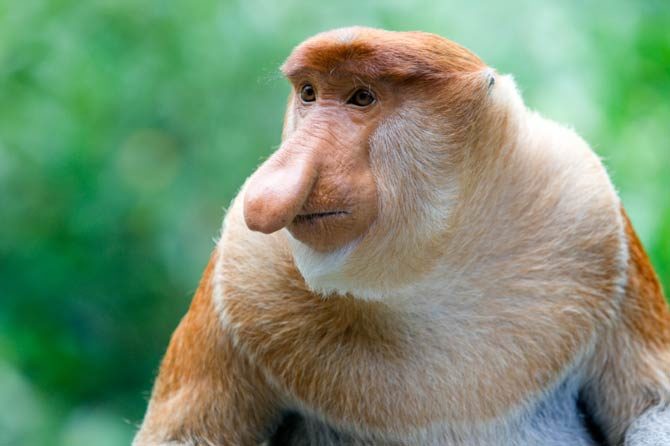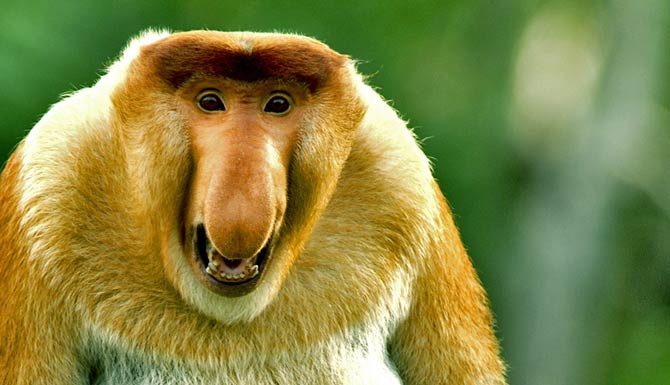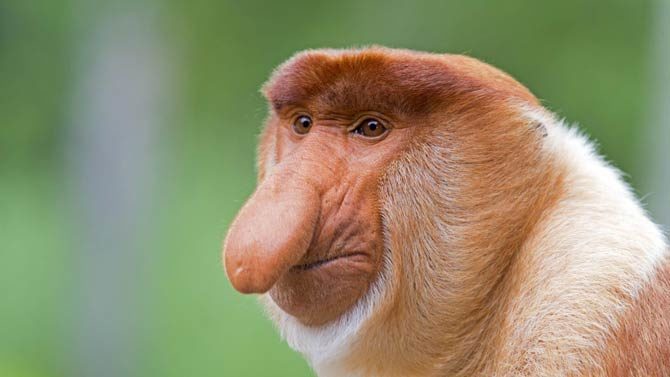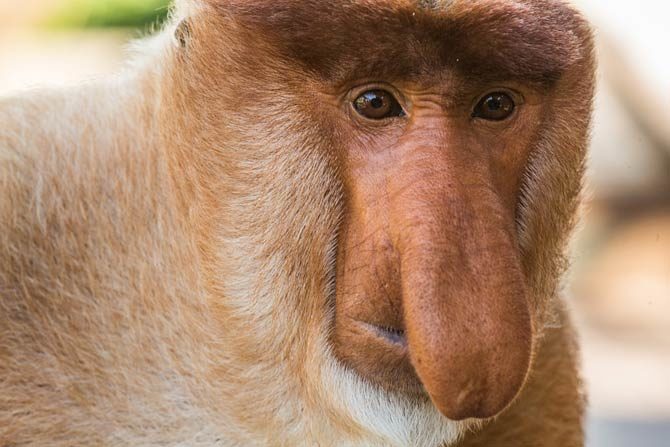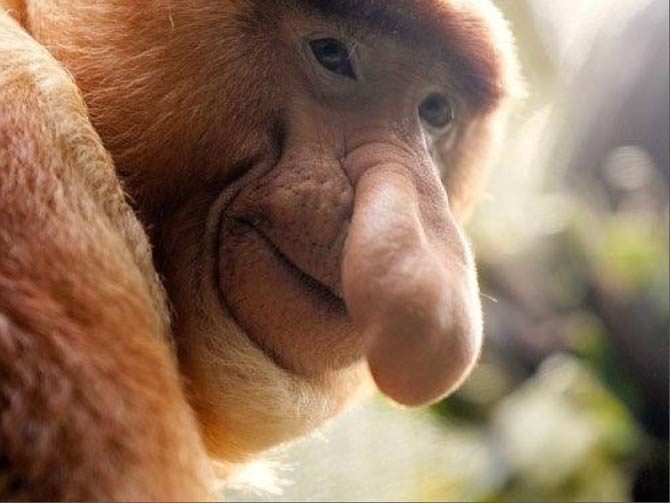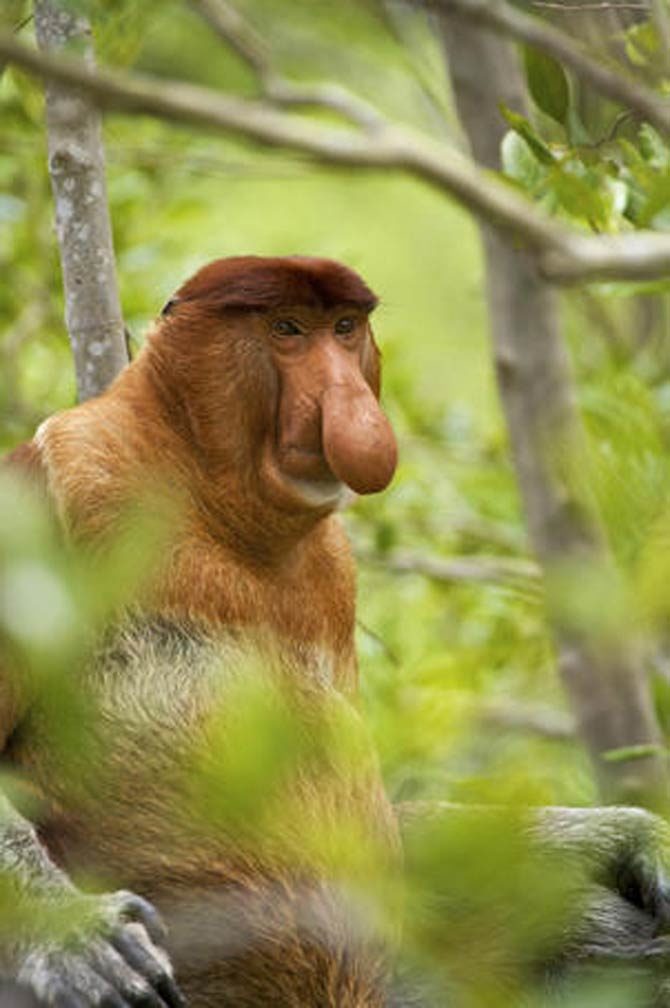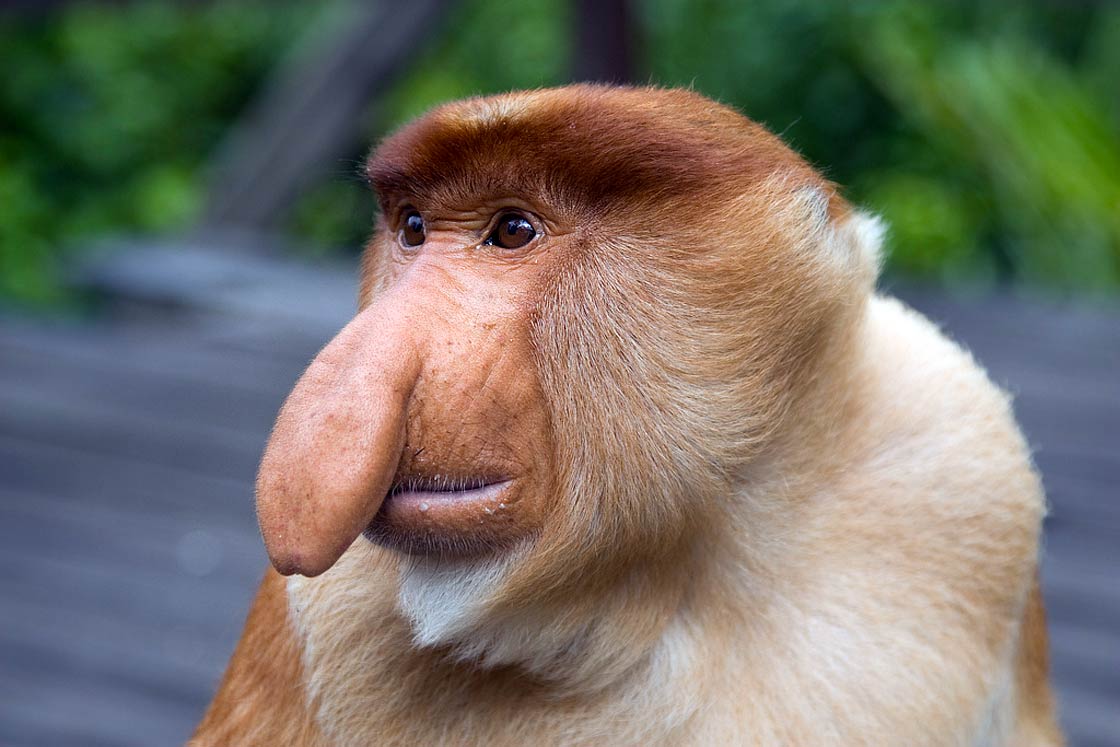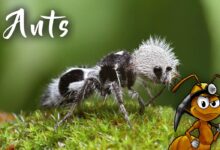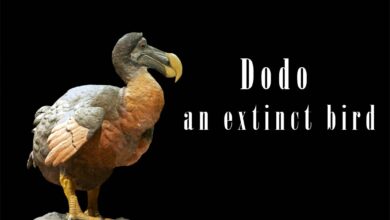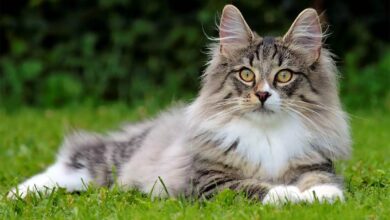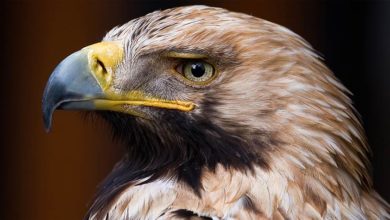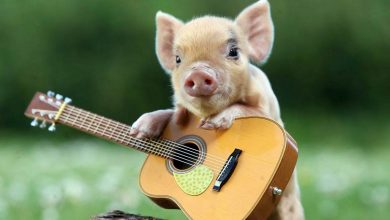Proboscis monkey – long-nosed monkey (Nasalis larvatus)
Some are written to become a walking beauty (like peacock or swans), others – being a characteristic figure. Although the proboscis monkey does not belong to the first group, one cannot refuse it an original and, undoubtedly, characteristic appearance.
As the lush rainforest canopy rustles with life, a distinctive silhouette can be seen moving through the trees. With its large, protruding nose and unique vocalizations, the Proboscis monkey, also known as the long-nosed monkey, stands out as one of the most fascinating primates in the world. Endemic to the island of Borneo, this arboreal species has evolved to become a true master of its environment, utilizing its specialized features and behaviors to thrive in a constantly changing landscape. Join us on a journey to discover the captivating world of the Proboscis monkey and learn why this remarkable primate is a true icon of the rainforest.
Classification
- Class: mammals
- Order: primates
- Family: Cercopithecidae
- Genus: Nasalis
- Species: Proboscis monkey (Nasalis larvatus)
- Names: Proboscis monkey, long-nosed monkey, bekantan

Occurrence
This endemic species occurs in Southeast Asia, on the Borneo. It can be found in the islands of three countries: Brunei, Malaysia, and Indonesia. For its habitat, it mainly chooses coastal areas along the rivers.
The species is restricted to lowland areas where tides are present, that is in mangrove forests, rich in plants from the family Dipterocarpaceae. It also lives in wetlands, rubber forests, rubber plantations, damp rainforests, heath forests and steep cliffs. It avoids non-forest areas and human settlements.
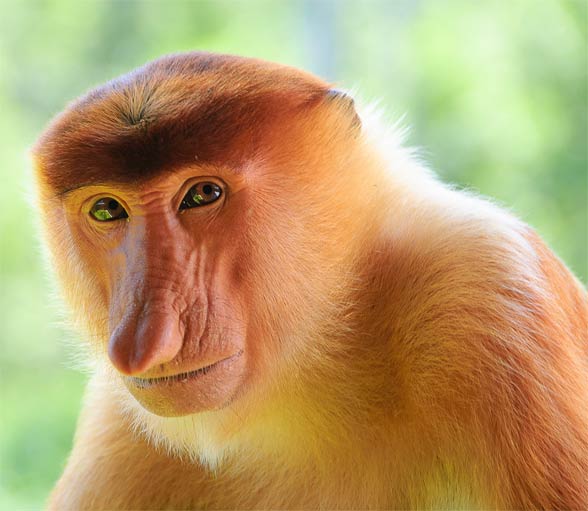
Appearance
It is one of the largest apes in Asia. Only Tibetan macaque (Macaca thibetana) is larger, and several species of monkeys of the genus Semnopithecus (Gray langur) are equal in size with the proboscis monkey.
Sexual dimorphism is visible as males reach 66 – 76.2 cm (26 – 30 in) in length and usually weigh 16 to 22.5 kg (35.3 – 49.6 lb). The heaviest known individual weighed 30 kg – 60 lb, while females measure 53.3 – 62 cm (21 – 24.4 in) and weigh from 7 to 12 kg (15.4 – 26.5 lb) – max 15 kg – 30 lb.
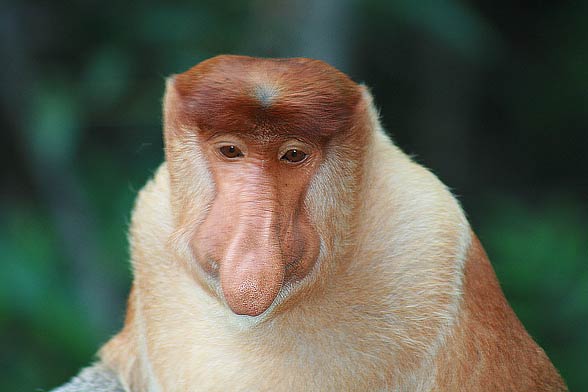
Nose
However, it is not the size of the body that determines whether a specimen is a “master” or a “lady” of the long-nosed monkey. The most important element of sexual dimorphism is… the nose – in males it has a shape of a hanging cucumber and can measure up to 17,5 cm (6.9 in) in length and cover the mouth. Females’ noses, although different in shape, are also relatively large, however, they are pointed and snub. The eyes are brown, intelligent, the ears are placed flat on the head.
The fur has an interesting coloration: on the back, it is light orange, reddish brown, yellowish or brick, the belly is light gray, fawn yellow or even bright orange, the face is usually orange-pink. Around the neck, there is a creamy “collar”. Males are equipped with a red penis and black scrotum. Both sexes have bulging bellies and very long limbs, and the toes are strongly elongated. The proboscis monkey can boast with its bright, long and slim tail, which helps it to keep the balance while jumping.
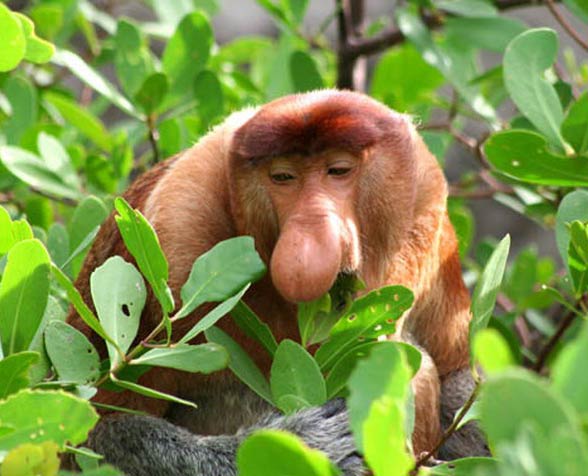
Diet
It is a seasonal folivore (it feeds on leaves). It also eats fruit, flowers, seeds, and sometimes insects. Its favorite plant is Eugenia. It prefers young leaves rather than the mature ones. The same applies to the fruit. The proboscis monkey usually feeds on fruit from January to May and on leaves from June to December. The groups of monkeys usually sleep on adjacent trees, near the rivers. They start their day looking for a food and relaxing on land.
Throughout the day they usually rest, wander about, eat and stay vigilant (how envy we are of their carelessness :)). Sometimes, in order to accelerate the digestion, they chew on the rest of the food from the rumen – the first and the biggest chamber in the alimentary canal.
As the night comes, the monkeys return to the nearby rivers and eat again. Their biggest threats are crocodiles, pythons, warns, eagles and Sunda clouded leopard (Neofelis diardi). In order to avoid the enemy, the monkey goes through the river by leaping over the trees or quickly swimming
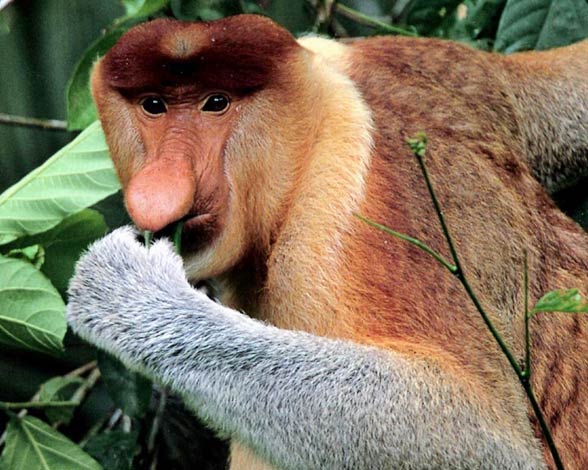
Social behavior
It lives in groups/harems, consisting of one adult male and 2 – 7 females and their offspring. Although the bachelor herds are formed as well, some males remain solitary.
The community occupies several trees, but they are poorly territorial, resulting in split society – individuals from other groups sleep in the same area.
There are even groups of Proboscis monkey, which have been “abandoned” by their community, which in its turn started a journey leaving one of the members. The individuals, which have been left behind meet and form a new group.
Several groups of monkeys gather during the day and travel together. Nonetheless, only individuals from their own community are allowed to spit and clean their fur. A group of several communities combined can count from 9 to 60 individuals.
They rarely behave in a violent, aggressive way, however, a gentle violence is common. In general, the members of the group are quite tolerant towards each other.
Among females, there is a linear hierarchy, and males from bachelor herds remain with each other for 6-8 years, where the dominance is being passed without violence or aggression. After reaching adulthood, males leave their groups and join the male community. The females sometimes leave the family group, probably in order to avoid infanticide or inbreeding, to reduce competition while seeking food, or raise their social status.
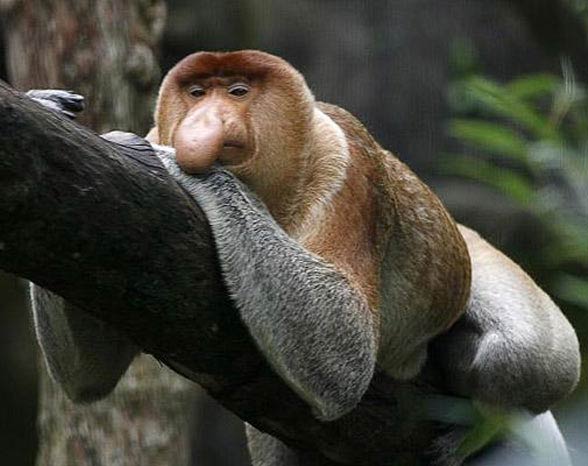
Verbal communication
The proboscis monkey is known for its numerous vocalizations. In order to emphasize the position of a male in a group, it emits a sound similar to a sound of a trumpet. A special kind of this vocalization is emitted to the juveniles in order to support and encourage them.
Males make alarm sounds in an emergency. A similar alarm is initiated by females, but these two vocalizations clearly differ from each other. In addition, females and immature individuals emit so-called “feminine calls” when they feel irritated. Roaring, growling in a low frequency is a characteristic sound of the males, which express this way their readiness to fight.
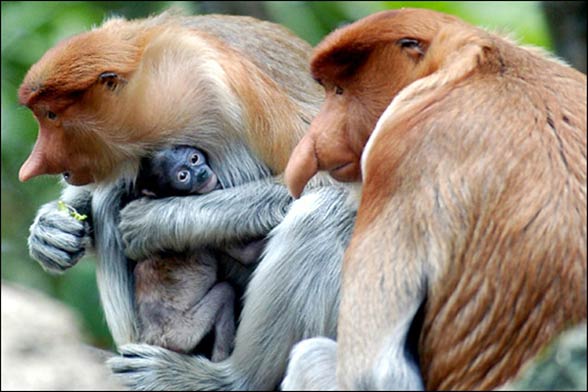
Reproduction
Females reach sexual maturity at around age 5, when their genitals become swollen and become red.
Pairing occurs between February and November, and births usually take place between March and May. The copulation itself does not last long – only half a minute. Before the intercourse, the male catches the partner’s torso or wrist and covers it from behind.
Pregnancy lasts 166 – 200 days or a bit longer, and the female usually gives birth at night or early in the morning. After birth, the mother eats the placenta and licks the newborn clean. The offspring begins to eat solid food after about 6 weeks, but milk is a basic part of its diet until it turns 7 months. The nose of a young male keeps growing until maturity. The mother allows other members of the community to take care of the juvenile.
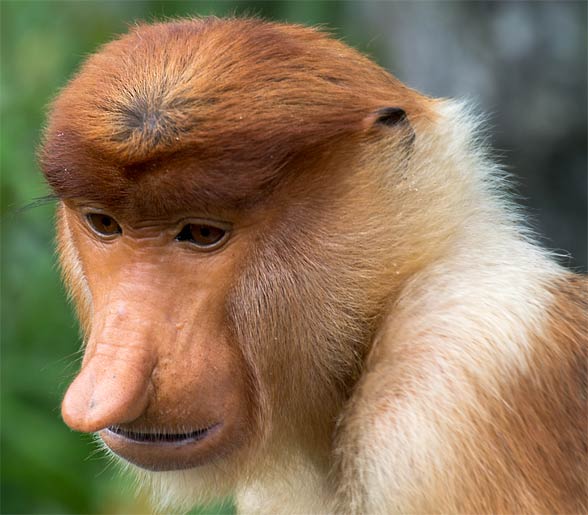
Detailed data and dimensions
Proboscis monkey, long-nosed monkey (Nasalis larvatus)
- Length:
- males: 66 – 76.2 cm (26 – 30 in)
- females: 53.3 – 62 cm (21 – 24.4 in)
- Weight:
- males: 16 – 22.5 kg (35.3 – 49.6 lb)
- females: 7 – 12 kg (15.4 – 26.5 lb)
- Tail length:
- males: 66 – 67 cm ( 26 – 26.4 in)
- female: 55 – 62 cm (21.7 – 24.4 in)
- Male’s nose length: 10 – 17.5 cm ( 4 – 6.9 in )
- Lifespan: about 13 years
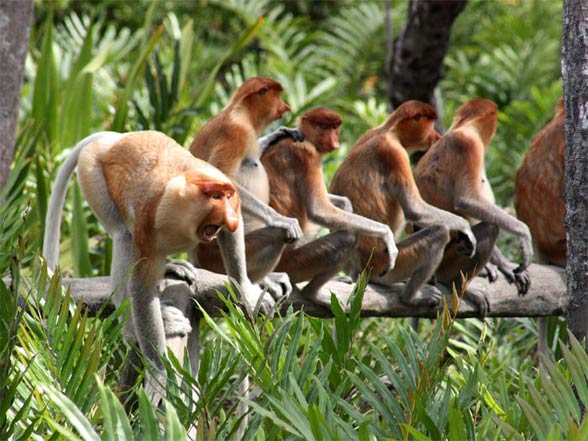
Proboscis monkey, long-nosed monkey – curiosities
- In Malay, the proboscis monkey is called monyet belanda (or ”Dutch monkey”), because the natives noticed that the Dutch colonists often had, like the proboscis monkeys, large bellies, and large noses.
- This species occurs at least 1 km (0.62 mi) from any source of water.
- The proboscis monkey feeds on at least 55 species of plants.
- The proboscis monkey is one of the best swimmers. It often jumps to the water from the branches of the trees, hitting his stomach against the water.
- The proboscis monkey can swim 20 m (65.6 ft) below the surface of the water.
- At Proboscis monkey has evolved a webbed between fingers and toes to help surpass crocodile crocodiles, one of the greatest threats of this species.
- The proboscis monkey feeds exclusively on unripe fruit because sugar contained in ripe fruit can ferment in its stomach causing fatal bloating.
- The proboscis monkey does not copulate only for reproductive purposes, many individuals of both sexes perform sexual romps, hmm?
- The proboscis monkey is an endangered animal – its population number has fallen by more than 50% over the past 36-40 years up to 2008. It is due to the deforestation of the trees in order to plant oil palms, which in consequence leads to a dramatic loss of its natural habitats. Reduction of the forests forces proboscis monkeys to descend from trees and travel long distances in search of food, exposing themselves to attacks from land predators. The proboscis monkey hunting in some areas constitutes another threat because for many natives its meat is considered a delicacy.
Long-nosed monkey – gallery
